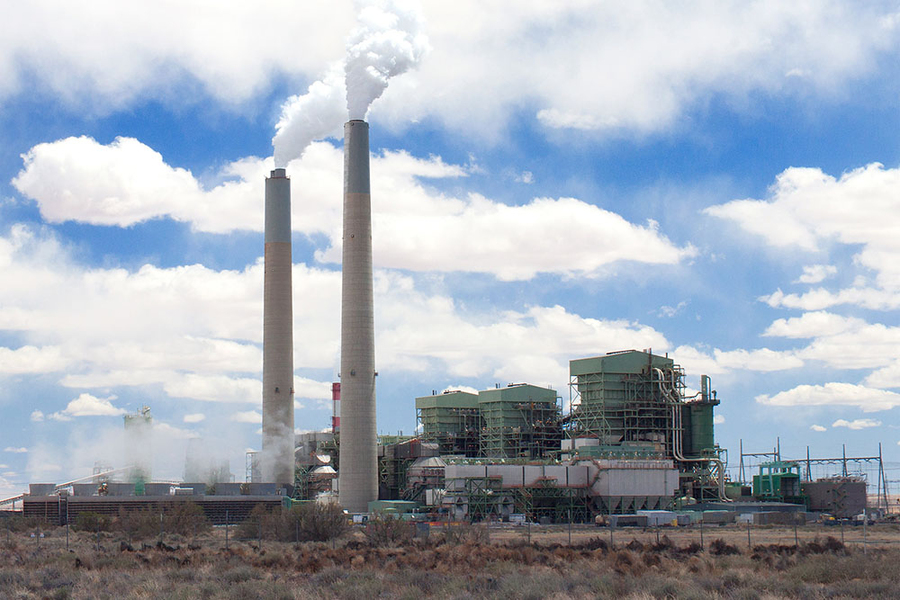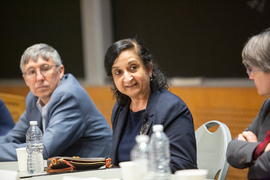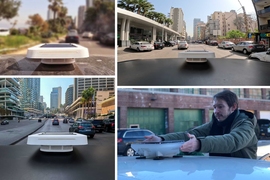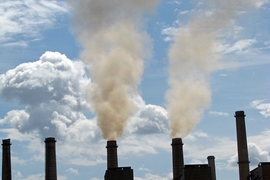Decarbonization of national economies will be key to achieving global net-zero emissions by 2050, a major stepping stone to the Paris Agreement’s long-term goal of keeping global warming well below 2 degrees Celsius (and ideally 1.5 C), and thereby averting the worst consequences of climate change. Toward that end, the United States has pledged to reduce its greenhouse gas emissions by 50-52 percent from 2005 levels by 2030, backed by its implementation of the 2022 Inflation Reduction Act. This strategy is consistent with a 50-percent reduction in carbon dioxide (CO2) by the end of the decade.
If U.S. federal carbon policy is successful, the nation’s overall air quality will also improve. Cutting CO2 emissions reduces atmospheric concentrations of air pollutants that lead to the formation of fine particulate matter (PM2.5), which causes more than 200,000 premature deaths in the United States each year. But an average nationwide improvement in air quality will not be felt equally; air pollution exposure disproportionately harms people of color and lower-income populations.
How effective are current federal decarbonization policies in reducing U.S. racial and economic disparities in PM2.5 exposure, and what changes will be needed to improve their performance? To answer that question, researchers at MIT and Stanford University recently evaluated a range of policies which, like current U.S. federal carbon policies, reduce economy-wide CO2 emissions by 40-60 percent from 2005 levels by 2030. Their findings appear in an open-access article in the journal Nature Communications.
First, they show that a carbon-pricing policy, while effective in reducing PM2.5 exposure for all racial/ethnic groups, does not significantly mitigate relative disparities in exposure. On average, the white population undergoes far less exposure than Black, Hispanic, and Asian populations. This policy does little to reduce exposure disparities because the CO2 emissions reductions that it achieves primarily occur in the coal-fired electricity sector. Other sectors, such as industry and heavy-duty diesel transportation, contribute far more PM2.5-related emissions.
The researchers then examine thousands of different reduction options through an optimization approach to identify whether any possible combination of carbon dioxide reductions in the range of 40-60 percent can mitigate disparities. They find that that no policy scenario aligned with current U.S. carbon dioxide emissions targets is likely to significantly reduce current PM2.5 exposure disparities.
“Policies that address only about 50 percent of CO2 emissions leave many polluting sources in place, and those that prioritize reductions for minorities tend to benefit the entire population,” says Noelle Selin, supervising author of the study and a professor at MIT’s Institute for Data, Systems and Society and Department of Earth, Atmospheric and Planetary Sciences. “This means that a large range of policies that reduce CO2 can improve air quality overall, but can’t address long-standing inequities in air pollution exposure.”
So if climate policy alone cannot adequately achieve equitable air quality results, what viable options remain? The researchers suggest that more ambitious carbon policies could narrow racial and economic PM2.5 exposure disparities in the long term, but not within the next decade. To make a near-term difference, they recommend interventions designed to reduce PM2.5 emissions resulting from non-CO2 sources, ideally at the economic sector or community level.
“Achieving improved PM2.5 exposure for populations that are disproportionately exposed across the United States will require thinking that goes beyond current CO2 policy strategies, most likely involving large-scale structural changes,” says Selin. “This could involve changes in local and regional transportation and housing planning, together with accelerated efforts towards decarbonization.”










